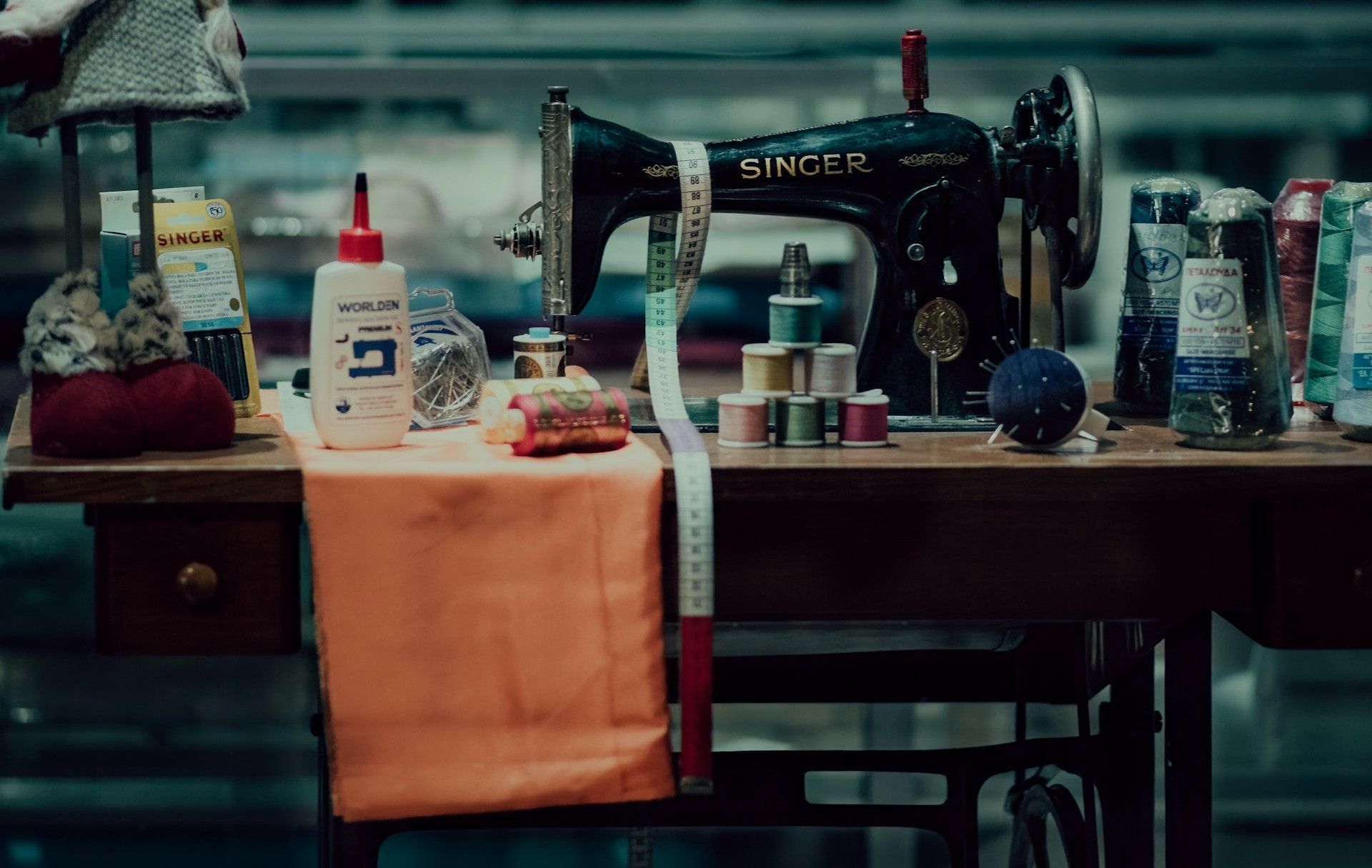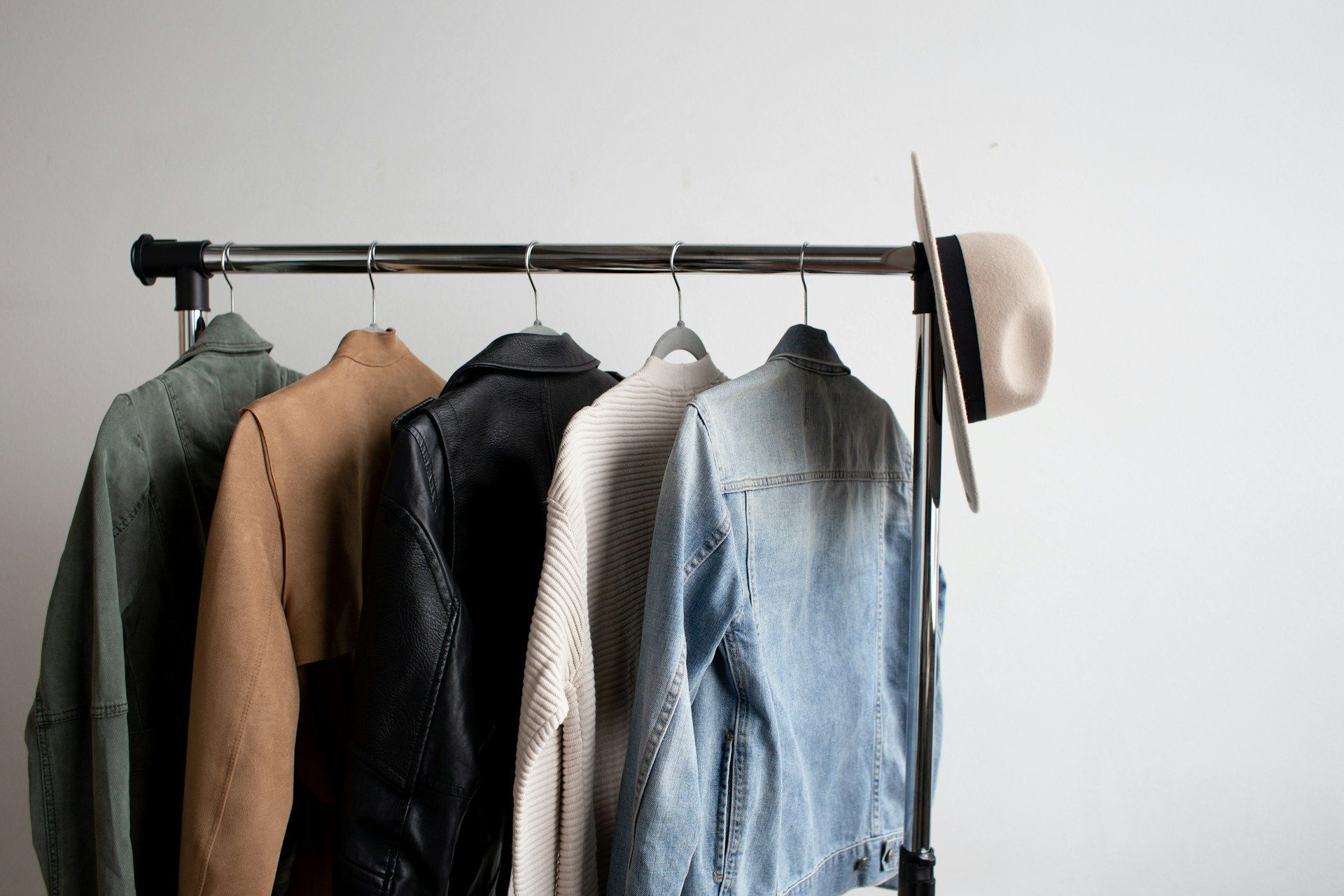01/10/25 |
Wardrobe Essentials: What Really Matters as Our Style Evolves|
Fashion’s Quiet Evolution: From Making Statements to Feeling at Home in Our Clothes.
I can picture that top in my head - the drape, the hook-and-eye - and with it comes a quiet realisation:
my reasons for dressing have slowly shifted.

Women and fashion – a tale as old as time. I cast my mind back to when my love affair with fashion first began. Sixth Form - year 12.
For my final project, I was tasked to create one item of clothing, documenting in my portfolio the research, theme, and ideas behind the final design. I made an evening top, draped at the waist and with an open back, fastened by a single hook and eye. The sleeves were long and bell shaped, gathered at the elbow for an added flair. I’d even added a cute little embroidery design to the front of the blouse.
Upon reflection, I’m not sure the overall colour pallet was in sync; however, I was just happy with the opportunity to actually design and create a piece of clothing from scratch.
I wonder where that top is. My guess? Buried at the bottom of a cardboard box, suitcase, or plastic storage bin crammed with other keepsakes I can’t quite bring myself to let go of. Or maybe it’s in a landfill somewhere, still sitting there after all these years. Did you know polyester, which makes up so many of our clothes, can take 20 to 200 years to break down. Honestly, the amount of stuff I learn while blogging.
Notably, as I’ve grown into my late twenties and early thirties, my enthusiasm for the latest fashion trends and must-haves has taken a back seat. The innate love for fashion is still there, but I suppose I’m at an age where feeling good and comfortable matters a tad bit more than looking like I’m dressed to the nines.
That shift in mindset got me curious: was I alone in this feeling, or were other women experiencing the same thing? Earlier this year, I conducted a
small survey with
52 women aged 30 to 45 to find out what really shapes their wardrobes today.

I asked a few straightforward questions to keep the answers comparable:
- Which single wardrobe item could you not live without?
- When choosing clothes, which matters most — comfort, style, or a balance of both?
- What most influences your clothing purchases (personal style, trends, price, etc.)?
The responses sharpened my intuition into clear patterns worth noting.
• Which item is indispensable?
When respondents were asked “Which single wardrobe item could you not live without?” the answer was decisive: comfortable jeans topped the list, selected by 42 out of 52 women. Other frequently nominated essentials were basic T-shirts (26 selections), the little black dress, and a tailored blazer (18 selections each). This wasn’t a vote for fashion excitement so much as a collective prioritisation of pieces that do many jobs well: day-to-day building blocks rather than one-off showpieces.
• Comfort vs style - what did people choose?
To the question “Which matters most when you choose clothes: comfort, style, or a balance of both?” almost half of participants (24) answered “a balance of both.” A smaller group prioritised
comfort alone (11), and only a very small minority put
style above comfort
(3). Framed another way: the era of sacrificing ease for aesthetics seems to be waning - women in this cohort are looking for garments that perform and flatter.
• What influences purchases — and how does that change by age?
I also asked, “What most influences your clothing purchases?” and the answers reveal an age-graded shift. Across all participants, personal preference or established style was the leading influence. That trend becomes even more pronounced in the
40–45 subgroup, who consistently emphasised
authenticity, quality and practicality when deciding what to buy. Within that bracket many said they deliberately favour
quality over quantity and reported owning several versatile pieces they rotate for different occasions. Their top bit of practical advice to others?
Invest in classic pieces
that won’t go out of style.
■ What does all this mean? ■
Two practical implications stand out.
First, if you're looking to curate a wardrobe: start with durable, well-fitting basics - the jeans and tees that carry you through the week, then add smarter pieces such as a blazer or an a LBD for when you need them.
Second, for brands and designers: there’s growing appetite for
well-made,
versatile items that prioritise fit and fabric longevity over fleeting novelty. Overall, the data from my survey suggest a slow but meaningful pivot from consumption driven by novelty to
consumption driven by usefulness - and sustainability follows naturally from that.
In a way, that old Sixth Form top feels like a little time capsule - a reminder of the girl who believed fashion was all about the thrill of making a statement. These days, I still love clothes, but I see them less as fleeting trends and more as pieces that quietly fit into the rhythm of my life.
What struck me most about the survey was how many women feel the same. We’re no longer dressing just to impress; we’re dressing to feel good, to feel like ourselves. The shift from chasing trends to valuing comfort, quality, and versatility isn’t about losing our love for fashion - it’s about redefining it.
Fashion will always move in seasons, but maybe the real change is in us:
learning that true style comes from the balance between how we look and how we feel in what we wear.

